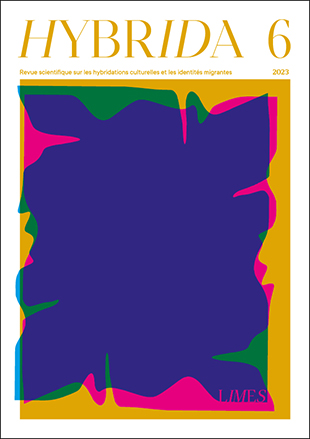La reconstrucción de las fronteras simbólicas entre Oriente y Occidente: El Occidentalismo en ‘The Battle on Lake Changjin’
DOI:
https://doi.org/10.7203/HYBRIDA.6.26244Palabras clave:
cine bélico, China, propaganda, orientalismo, occidentalismo Resumen
Resumen
El artículo analiza el concepto de occidentalismo y su representación en la reciente superproducción china The Battle at Lake Changjin. El autor sostiene que la película representa un resurgimiento del Occidentalismo en el cine popular chino, reforzando el binario Este-Oeste y promoviendo una narrativa de superioridad china. El debate comienza contextualizando los orígenes históricos del binario Oriente-Occidente y su papel en la conformación de las identidades occidentales y la justificación de prácticas como el colonialismo. El artículo también destaca las intrincadas complejidades y contradicciones de la película, así como sus implicaciones para el panorama cultural y político de China, en concreto el cambio de actitud de China hacia Occidente durante el mandato del Presidente Xi Jinping. El artículo destaca la creciente cerrazón de la mentalidad china, ejemplificada por la adopción de la «diplomacia del guerrero lobo» y la representación de Occidente como adversario en los medios de comunicación. Este cambio también es perceptible en el cine popular chino, ejemplificado por películas como Wolf Warrior 2, que presenta a protagonistas chinos triunfando sobre villanos personajes occidentales. El autor subraya la representación esencialista de los chinos en The Battle at Lake Changjin como moral y espiritualmente superiores a sus homólogos occidentales. Al crear una dura oposición binaria entre Oriente y Occidente, la película acentúa las diferencias culturales y las presenta como insuperables. Además, el artículo explora la estructura narrativa de la película, sus influencias del cine occidental y chino, y la representación de personajes clave, como el general Douglas MacArthur y Mao Zedong.
 Descargas
Descargas
 Citas
Citas
Berry, C. (2018). Wolf Warrior 2: Imagining the Chinese Century. Film Quarterly, 72(2), 38–44. https://doi.org/10.1525/fq.2018.72.2.38
Bonnett, A. (2004). The Idea of the West: Culture, Politics and History. Palgrave Macmillan.
Brzeski, P. (2021, October 11). China Box Office: ‘Battle at Lake Changjin’ Marches Past $600M. The Hollywood Reporter. https://www.hollywoodreporter.com/movies/movie-news/battle-at-lake-changjin-box-office-1235029428/
Chen, X. (2002). Occidentalism: A Theory of Counter-discourse in Post-Mao China. Rowman & Littlefield.
Gates, P. (2005). “Fighting the Good Fight:” The Real and the Moral in the Contemporary Hollywood Combat Film. Quarterly Review of Film and Video, 22(4), 297–310. https://doi.org/10.1080/10509200590475788
Guan, F. (2022). The Art of War. Dissent Magazine. https://www.dissentmagazine.org/article/the-art-of-war
Lemaître. (2022, October 16). The West, China’s designated enemy. Le Monde.Fr. https://www.lemonde.fr/en/international/article/2022/10/16/the-west-china-s-designated-enemy_6000533_4.html
Liu, K. (2003). Globalization and Cultural Trends in China. University of Hawaii Press.
Maxwell, A. (2011). The East-West Discourse: Symbolic Geography and Its Consequences. Peter Lang.
Nicieja, S. (2018). Lessons from the East: Representations of East Asia in Contemporary Anglophone Films and Novels. Peter Lang.
Pottinger, M., Johnson, M., & Feith, D. (2022, November 30). Xi Jinping in His Own Words. Foreign Affairs. https://www.foreignaffairs.com/china/xi-jinping-his-own-words
Said, E. W. (2003). Orientalism: Western Conceptions of the Orient. Penguin Books.
Teo, S. (2019). The Chinese film market and the Wolf Warrior 2 phenomenon. Screen, 60(2), 322–331. https://doi.org/10.1093/screen/hjz017
Why China is turning away from English. (2022, April 12). The Economist. https://www.economist.com/china/2022/04/13/why-china-is-turning-away-from-english
Descargas
Publicado
Cómo citar
-
Resumen450
-
HTML 1050
-
PDF 253
Número
Sección
Licencia
![]()
Todos los documentos en la plataforma OJS son de acceso abierto y propiedad de sus respectivxs autorxs.
Lxs autorxs que publican en la revista aceptan los siguientes términos:
- Lxs autorxs conservan los derechos y garantizan a HYBRIDA el derecho a ser la primera publicación del documento, con licencia de Creative Commons de Atribución-NoComercial-CompartirIgual 4.0 Internacional (CC BY-NC-SA 4.0) que permite a otros compartir el trabajo con un reconocimiento de autoría y publicación en la revista.
- Se permite y se anima a lxs autorxs a difundir su trabajo (una vez publicado) a través de medios electrónicos utilizando sitios web personales o institucionales (archivos abiertos institucionales, sitios web personales o perfiles de redes profesionales y académicas).
















